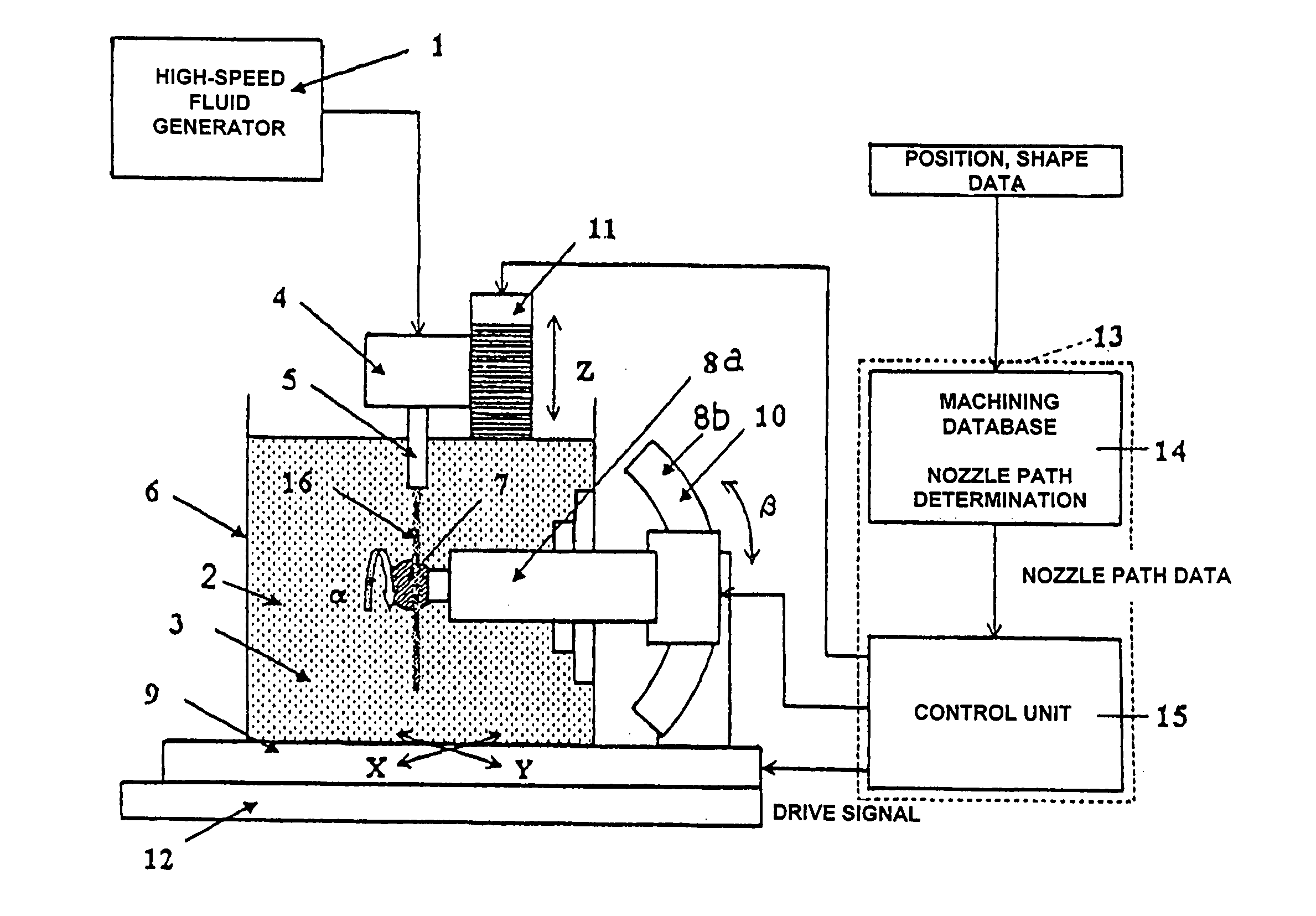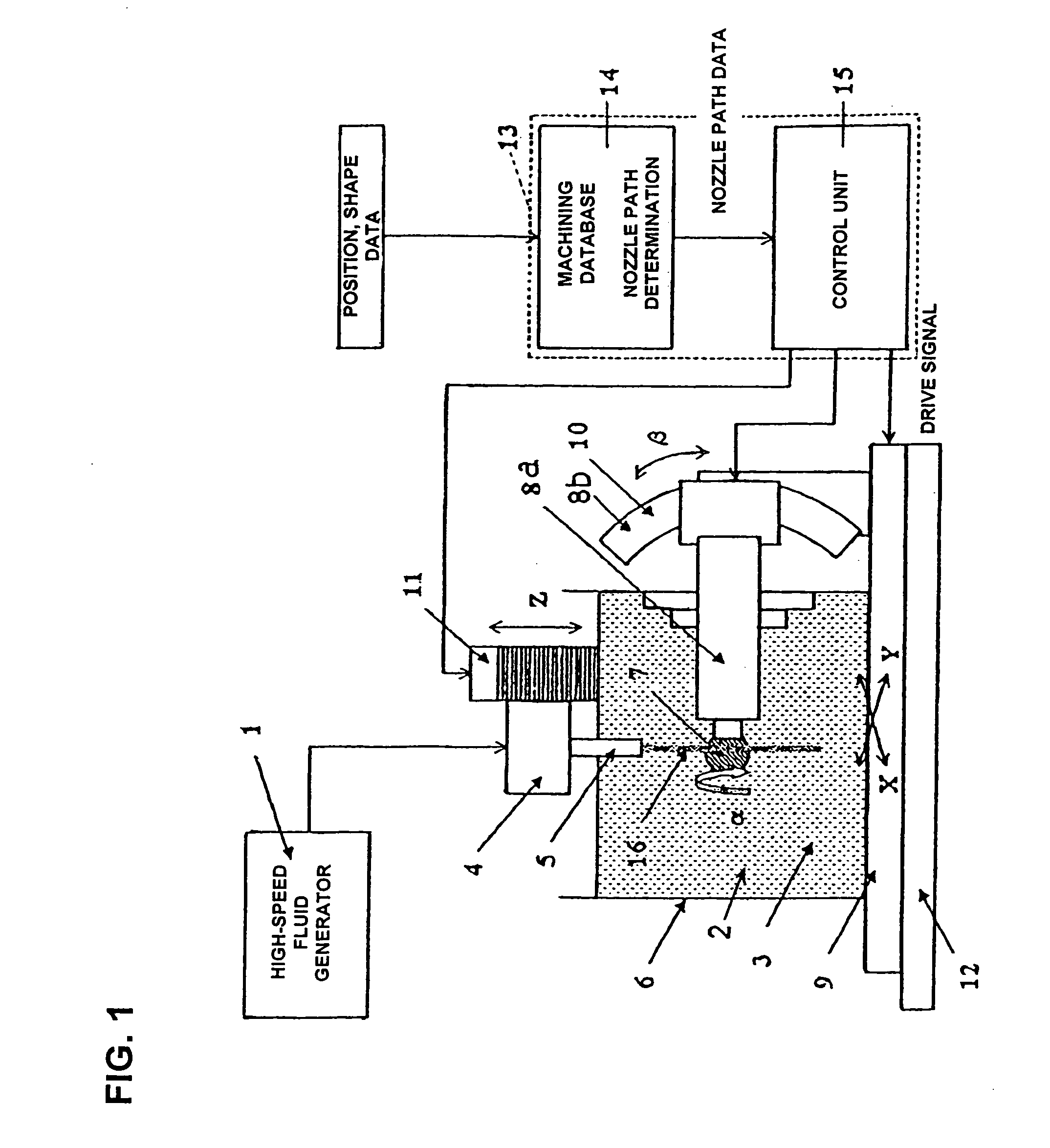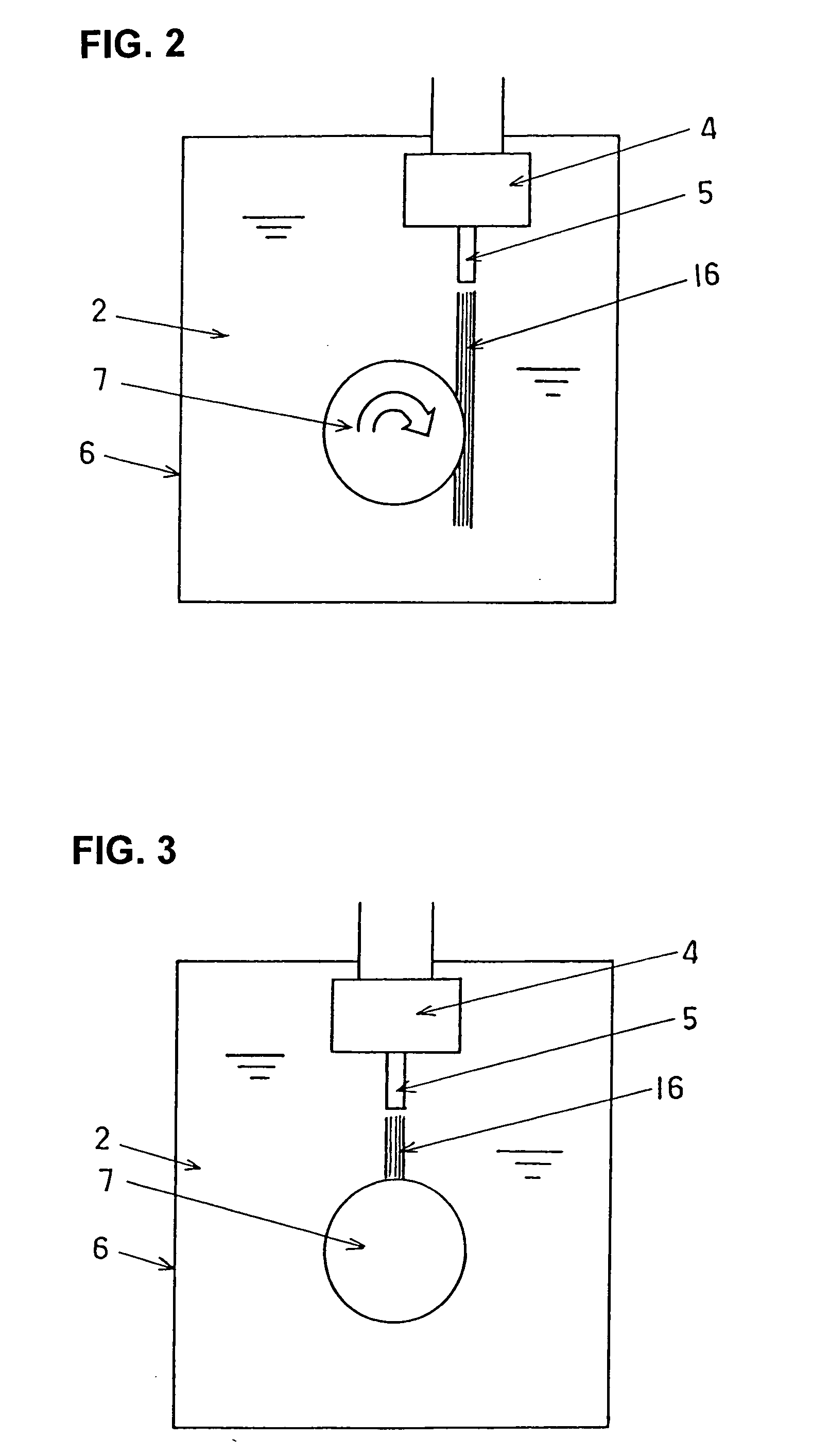Curved surface machining method and an apparatus thereof
a machining method and machining method technology, applied in the direction of grinding machines, grinding machine components, manufacturing tools, etc., can solve the problems of time required to finish the surface, inability to achieve mass production, and difficulty in achieving a desired curved surface. achieve the effect of improving surface roughness, improving profile accuracy, and improving precision
- Summary
- Abstract
- Description
- Claims
- Application Information
AI Technical Summary
Benefits of technology
Problems solved by technology
Method used
Image
Examples
embodiment 1
[0041] Test results will be shown for a case in which the curved surface machining apparatus according to the present invention was used to actually perform finishing machining for improving the surface roughness and profile accuracy of the surface of a workpiece with a convex spherical surface. An abrasive dissolved in water was used as the abrasive-containing solution used herein, the head of a bone (22.2 mm in diameter (surface roughness: 0.04 μm Ra)) for a spherical artificial hip joint made of a medical Co—Cr—Mo alloy was used as the workpiece, and a water jet was used as the high-speed fluid.
[0042] The procedure for this test is as follows:
[0043] First, the head of a bone is set on an attachment jig and mounted on a spindle, and the center of the spherical surface formed by the head of the bone is determined. FIG. 4 is an explanatory diagram showing this step as seen from the X-axis direction, and FIG. 5 is an explanatory diagram as seen from the Z-axis direction. The spindl...
embodiment 2
[0052] Next, a method for optimally machining a spherical workpiece such as the head of a bone will be described.
[0053] If the workpiece is spherical, the peripheral velocity of a certain peripheral surface along the Y axis is different depending on the distance (angle) from the equator of the sphere. Therefore, rotating the workpiece at a constant rotational speed or keeping the advance speed of the nozzle constant causes the machining conditions to differ in that portion, so that circularity is sometimes reduced even more. Furthermore, the amount of abrasive in the abrasive-containing solution decreases as the grinding progresses, so the conditions are different at the start and end of machining. Accordingly, machining conditions must be set with this taken into account.
[0054] First, in the case of the advance speed, the amount of the water jet received by the machined surface of the workpiece (the sprayed surface being sprayed with the water jet) per unit of time is designed to...
embodiment 3
[0061] In order to verify the above, with the use of the machining conditions shown in Table 3, an experimentation and simulation were carried out with the method shown below. The circularity of the head of the bone following machining was then measured or the following three cases: [0062] (i) When the advance speed was kept constant at 0.01 mm / s [0063] (ii) When the advance speed was controlled
[0064] (iii) When the advance speed was controlled and the concentration corrected
TABLE 3Nozzle advance speed (mm / s)0.01Nozzle diameter (mm)0.25Abrasive grain size (μm)1.0Initial abrasive concentration (wt %)3.2Standoff distance (mm)8.5Water jet pressure (Mpa)200Rotational speed of workpiece (rpm)3000Abrasive materialGreen silicon carbide
[0065]FIG. 9 shows the results of measuring the circularity shown in the results of (i) through (iii). In the case of (i) above, machining was excessive near the poles of the head of a bone where the advance speed is low, so that the circularity deteriorat...
PUM
| Property | Measurement | Unit |
|---|---|---|
| grain size | aaaaa | aaaaa |
| particle size | aaaaa | aaaaa |
| surface roughness | aaaaa | aaaaa |
Abstract
Description
Claims
Application Information
 Login to View More
Login to View More - R&D
- Intellectual Property
- Life Sciences
- Materials
- Tech Scout
- Unparalleled Data Quality
- Higher Quality Content
- 60% Fewer Hallucinations
Browse by: Latest US Patents, China's latest patents, Technical Efficacy Thesaurus, Application Domain, Technology Topic, Popular Technical Reports.
© 2025 PatSnap. All rights reserved.Legal|Privacy policy|Modern Slavery Act Transparency Statement|Sitemap|About US| Contact US: help@patsnap.com



